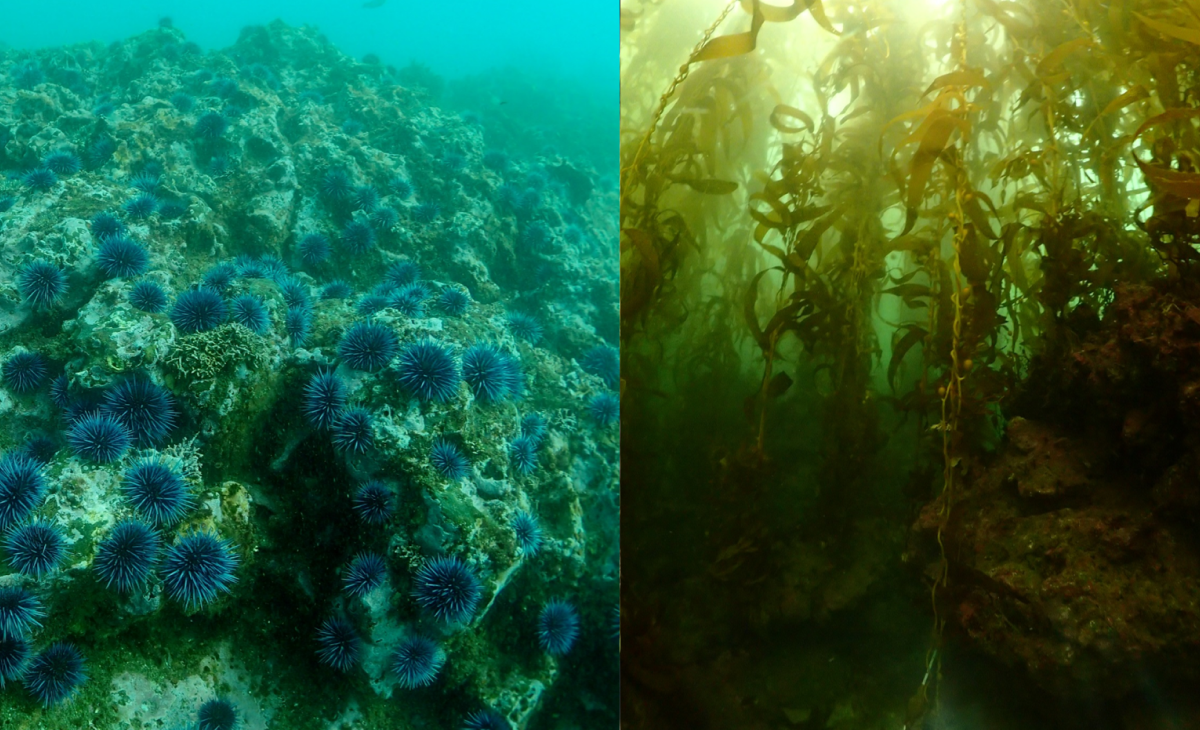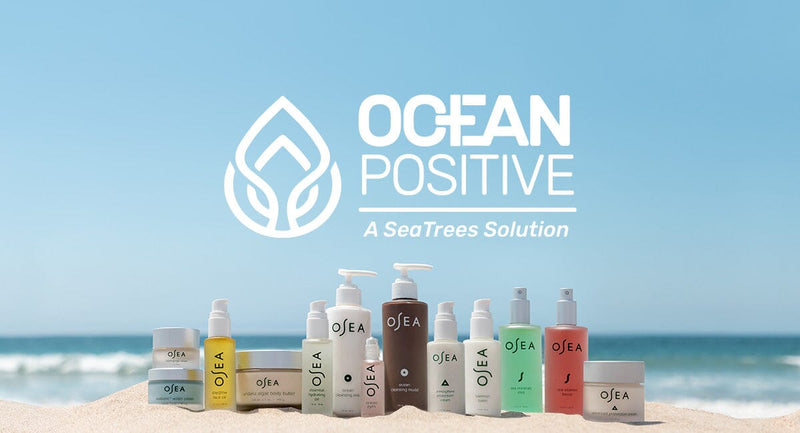We know that healthy oceans are crucial to the protection of our planet. That’s why we’ve taken action to become an Ocean Positive verified brand with our partner SeaTrees. This means that we offset more carbon than we create. For every ton of carbon that we offset, we pay it forward by investing in coastal restoration projects in Palos Verdes, California, Kenya, Cambodia and Indonesia that sequester (“suck”) carbon from the atmosphere.
What Is Ocean Positive?
It’s a certification process through our partner, SeaTrees that requires brands to go beyond carbon neutral, to offset more carbon than we create. Each year, we offset 100% of our carbon footprint in partnership with Climate Neutral. But starting now, we are restoring multiple ecosystems to sequester more carbon emissions than we create by investing in coastal restoration projects. This makes us an Ocean Positive verified brand.

Our Oceans and the Global Carbon Cycle
The ocean contains 90% of carbon in the global carbon cycle. That’s a lot of carbon! What does this mean? Here’s a little refresher:
The carbon cycle is a process where carbon dioxide travels from the atmosphere into living organisms and the Earth, then back into the atmosphere. Humans play a major role in the activities of the carbon cycle through activities such as the burning of fossil fuels. As a result, the amount of carbon in the atmosphere is rapidly rising, resulting in climate change.
The Ocean Can Reverse Climate Change
The ocean’s superpower is to sequester (aka–suck) more carbon out of the atmosphere than any other ecosystem on Earth. How does it do this? Seaweed, sea grasses, mangrove trees, salt marshes and other coastal ecosystems are incredibly efficient at storing carbon. They absorb carbon at a much faster rate than forests and can contain it for millions of years!
But our ocean and its beloved ecosystems need our help to be more effective. Our partnership with SeaTrees helps to protect and regenerate blue-carbon coastal ecosystems.
Our Commitment to Sustainability
We invest in three SeaTrees blue-carbon coastal ecosystem projects. Every project is assessed and measured against the United Nations Sustainable Development Goals.
1. Palos Verdes, California: Giant Kelp Forest Regeneration
Kelp ecosystems in California are in a state of crisis. In some parts of the state, more than 90% of kelp forests have disappeared in the last 10 years. Caused by the proliferation of purple sea urchins, human activities and climate change.
In this project we support the clearing of "urchin barrens" to allow kelp to regrow and re-establish into a healthy kelp forest, creating habitat for marine life.
The latest science shows that globally, kelp forests can sequester from 1 billion to 10 billion tons of carbon per year. So, restoring these sequoias of the sea is critical to solving climate change.
2. Southern Cardamom REDD+ Project in Cambodia
This project contains 2000+ hectares of pristine mangrove rainforest and helps to protect and enhance a further 50,000+ hectares of mangroves in the Gulf of Thailand. Blue-carbon mangrove ecosystems are most effective at sequestering carbon when they are directly connected to a healthy watershed, so protecting them is key.
Our contribution in this project helps to protect habitat for critically endangered species, like the Irrawaddy Dolphin and Malaysian Sun Bear. It will additionally help provide jobs, education and healthcare benefits for 16,000+ people in the local community who will support these endeavors.
3. Biak Island Region, West Papua, Indonesia
We’ll be planting mangrove trees on the small island called Padaido. Every 10 mangrove trees planted:
- Has the potential to sequester more than 3 metric tons of carbon over the 25-year life of the trees
- Creates approximately 1/2 day of living-wage employment for local community members, helping to support 55 families
- Provides resources for local education
- Protects local villages from storm surges and sea-level rise
- Serves as critical nursery grounds for fish and shellfish, and increases local marine productivity
4. Mangrove Trees, Mida Creek, Kenya
The Mida Creek project restores 100+ hectares of degraded mangrove forest within the Malindi Watamu National Marine Park and Reserve - a UNESCO Designated Biosphere Area and one of the world’s oldest Marine Protected Areas. Every mangrove tree planted:
- Helps to create meaningful employment for more than 200 people.
- Provides resources for local education.
- Protects local villages from storm surges and sea-level rise.
- Serves as critical nursery grounds for fish and shellfish, and increases local marine productivity.
- Has the potential to sequester approximately 300kg of carbon dioxide over the 25-year life of the tree.
